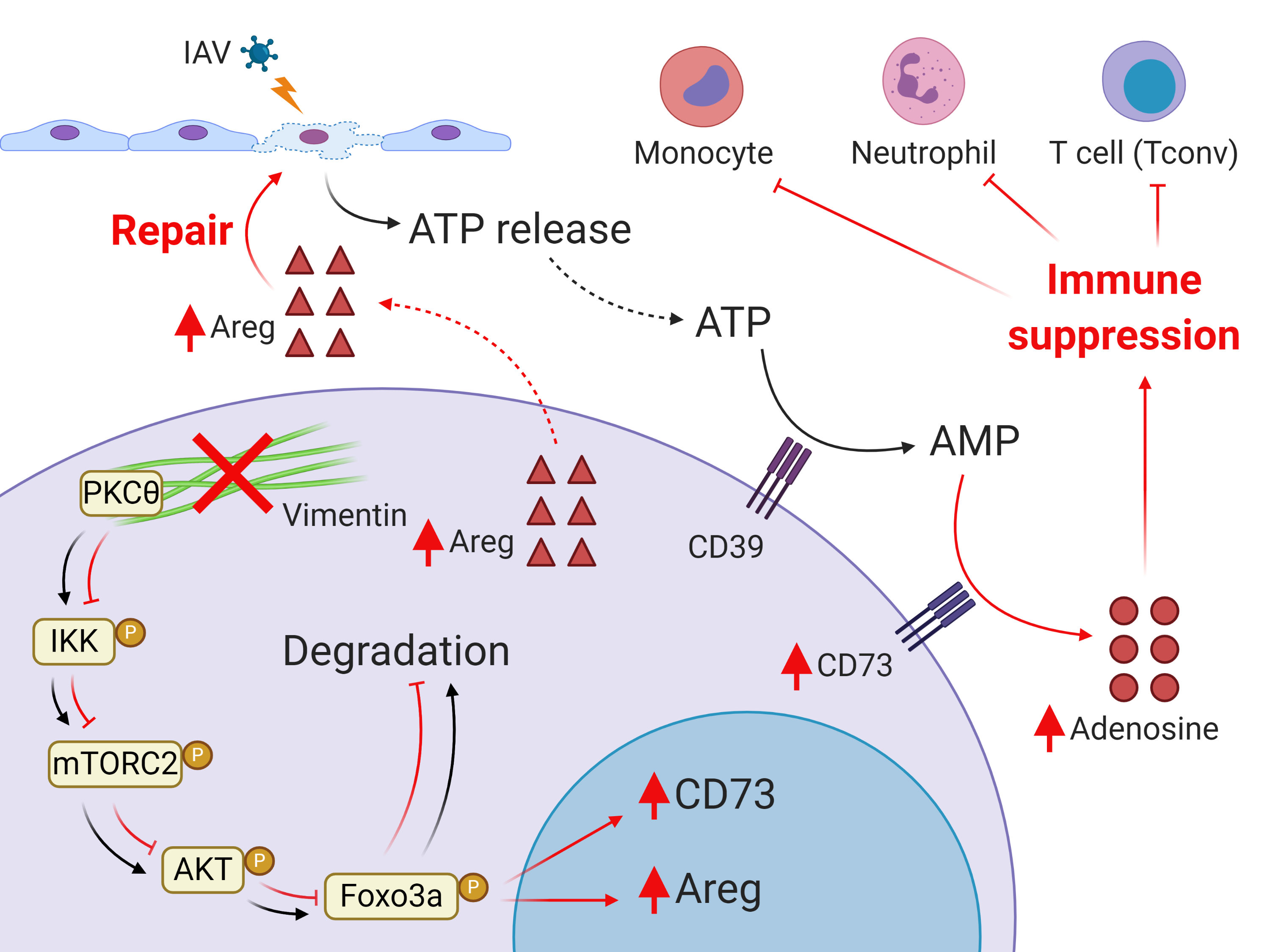Role of Vimentin in Regulatory T Cell Function

Diagram of regulatory T cell function in influenza A virus infection and the possible role of vimentin. Created with BioRender.com.
Regulatory T cells (Tregs) are a distinct population of CD4+ lymphocytes, identified by their expression of the transcription factor forkhead homeobox protein-3 (FOXP3). Tregs serve an essential role in suppressing the immune response and facilitating resolution, and have the capacity to directly exert tissue repair functions in response to lung injury and inflammation [1-3].
Tregs can generate extracellular adenosine via the expression of CD39 and CD73, which sequentially converts extracellular ATP to AMP, then AMP to adenosine. Adenosine receptors (mainly A2AR and A2BR) are highly expressed in immune cells and lung epithelial cells, and adenosine signaling protects the lung from injury and excessive inflammation. In addition, adenosine increases the number of Tregs and sustains their suppressive function, further promoting their immunoregulatory activity [4].
Amphiregulin (Areg) is an epidermal growth factor that is a significant mediator of tissue repair in the lungs during influenza A virus (IAV) infection, and Tregs serve as a major early source of amphiregulin in IAV infection [5]. However, the mechanisms that enhance Tregs to promote resolution of established damage remain unknown.
Vimentin, a type 3 intermediate filament and a key protein in the distal pole complex in Tregs, could suppress Treg function in a graft-versus-host disease model [6]. Infection by IAV induces robust Treg proliferation and activation to facilitate tissue repair, but the role of vimentin in Treg function is unknown.
We use unique genetic approaches to investigate whether loss of vimentin in Tregs augments their function, promoting lung recovery following IAV infection, and to decipher the molecular mechanism that controls Treg function.
-
Prigge et al., Age-dependent differences in T-cell responses to influenza A virus, Am J Respir Cell Mol Biol, 2020 (PMID: 32609537).
- Mock et al., Foxp3+ regulatory T cells promote lung epithelial proliferation, Mucosal Immunol, 2014 (PMID: 24850425).
- Garibaldi et al., Regulatory T cells reduce acute lung injury fibroproliferation by decreasing fibrocyte recruitment, Am J Respir Cell Mol Biol, 2013 (PMID: 23002097).
- Ohta & Sitkovsky, Extracellular adenosine-mediated modulation of regulatory T cells, Front Immunol, 2014 (PMID: 25071765).
- Arpaia et al., A distinct function of regulatory T cells in tissue protection, Cell, 2015 (PMID: 26317471).
- McDonald-Hyman et al., The vimentin intermediate filament network restrains regulatory T cell suppression of graft-versus-host disease, J Clin Invest, 2018 (PMID: 30106752).